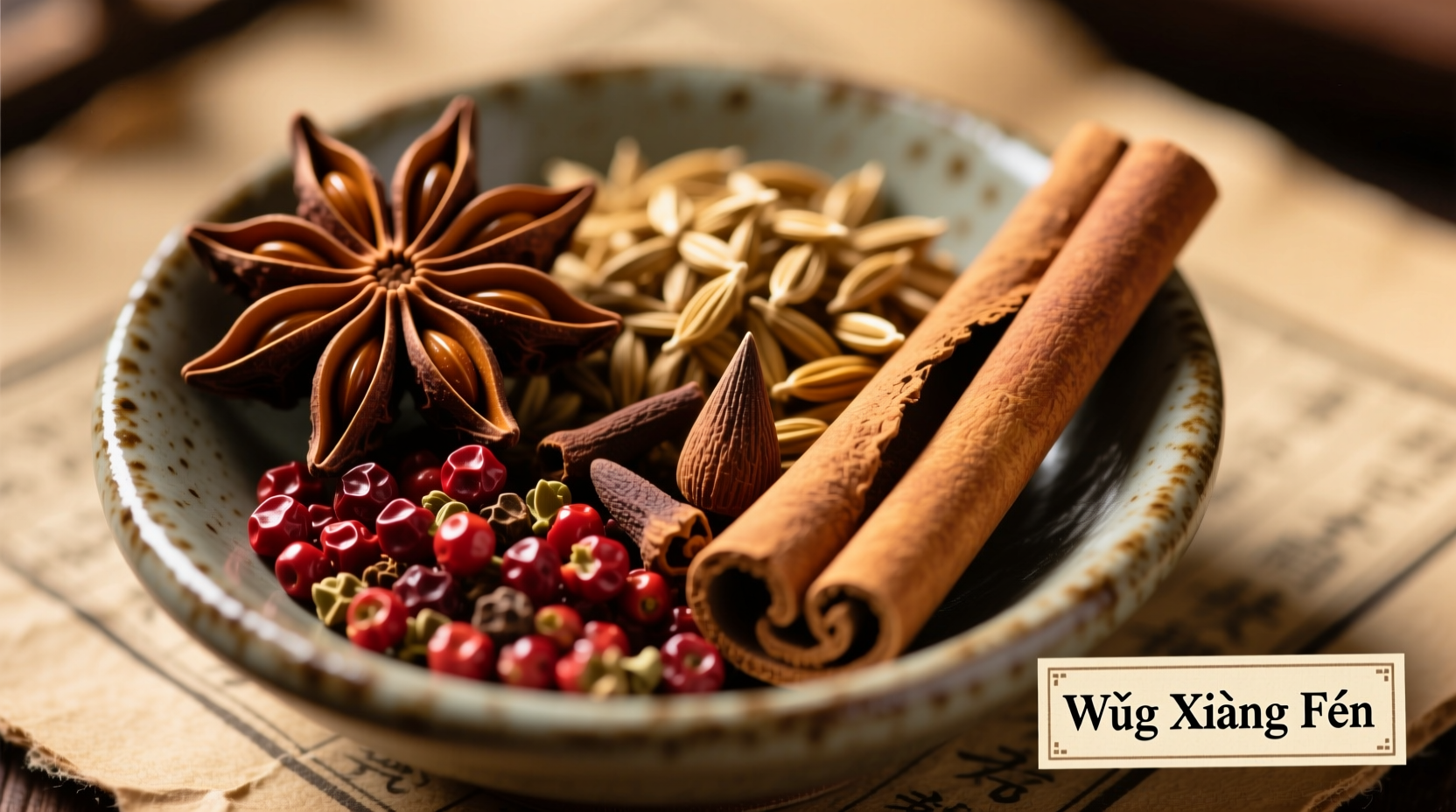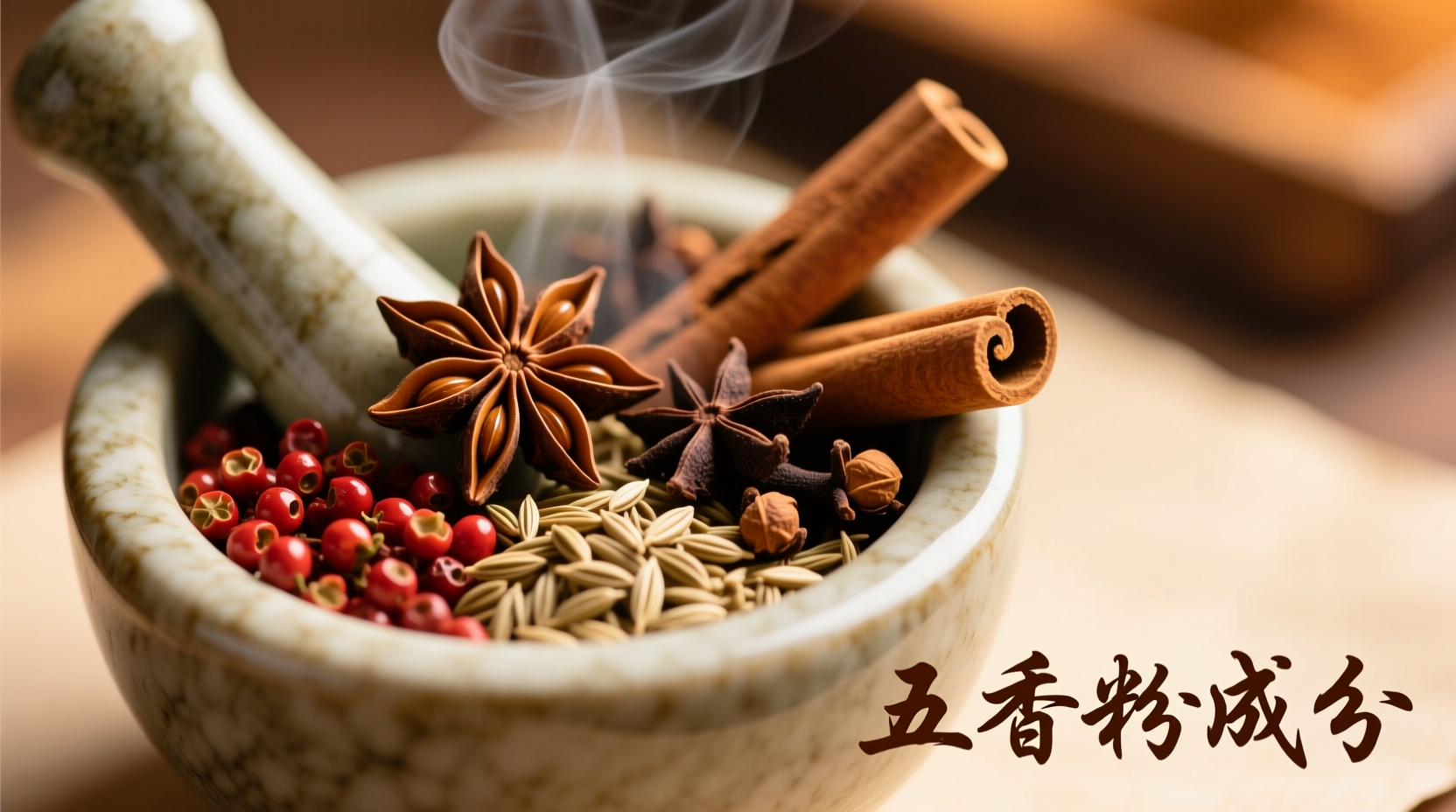Stop wondering what gives authentic Chinese dishes their distinctive aroma and depth. Understanding the precise composition of Chinese five spice unlocks the secret to recreating classic recipes from Peking duck to braised pork belly. This definitive guide reveals not just the spices themselves, but how they work together, regional variations you should know, and practical tips for using this essential blend in your kitchen.
The Five Essential Spices Decoded
While variations exist across China's diverse culinary regions, authentic Chinese five spice always contains these five botanical components, each playing a specific role in the flavor profile:
Star Anise (8:00)
This distinctive star-shaped pod provides the dominant licorice-like sweetness that defines the blend. Scientifically known as Illicium verum, it contains anethole, the same compound found in anise and fennel. In traditional Chinese medicine, star anise is valued for its warming properties and digestive benefits. When selecting star anise, look for deep reddish-brown pods with a strong, sweet aroma—avoid any with musty smells which indicate age.
Cloves (1:00)
These small, nail-shaped flower buds from the Syzygium aromaticum tree contribute warm, pungent notes with subtle bitterness. Cloves contain eugenol, which creates that characteristic spicy warmth. In Chinese culinary tradition, cloves represent the 'bitter' element in the five-flavor balance. Fresh cloves should be firm with a strong, penetrating aroma—crush one between your fingers to test freshness before grinding.
Chinese Cinnamon (1:00)
Often confused with regular cinnamon, Chinese cinnamon (Cinnamomum cassia) comes from a different species with thicker, rougher bark and a more intense, slightly medicinal flavor. It provides the 'sweet' element in the blend. Unlike Ceylon cinnamon common in Western baking, cassia has higher coumarin content, giving it that distinctive Chinese bakery aroma. Look for thick, dark reddish-brown quills that crumble easily when bent.
Sichuan Peppercorns (1:00)
Despite the name, these aren't true peppercorns but the dried husks of Zanthoxylum berries. They deliver the unique 'ma la' (numbing-spicy) sensation central to Sichuan cuisine. The active compound hydroxy-alpha sanshool creates that tingling mouthfeel. Authentic Sichuan peppercorns should be reddish-brown with a floral aroma—not musty. Avoid bright red varieties which may be artificially colored.
Fennel Seeds (1:00)
The earthy, slightly sweet seeds of Foeniculum vulgare complete the blend, representing the 'salty' element in Chinese flavor theory. They provide a subtle background note that rounds out the more aggressive spices. Fresh fennel seeds should be greenish-brown with a clean, anise-like fragrance. Toast them lightly before grinding to enhance their natural sweetness.
Traditional Ratios and Why Precision Matters
The standard ratio for Chinese five spice follows an 8:1:1:1:1 proportion—eight parts star anise to one part each of the other spices. This specific balance ensures no single spice dominates while creating that signature complex aroma. Many commercial blends get this wrong, overemphasizing star anise or substituting regular pepper for Sichuan peppercorns.
When making your own blend, precision matters more than you might think. A University of California study on spice extraction (2022) found that varying ratios by just 10% significantly altered the volatile compounds released during cooking, directly affecting the final dish's flavor profile. For example, too much Sichuan peppercorn overwhelms with numbing sensation, while insufficient star anise loses that essential backbone flavor.
Regional Variations Across China
Chinese five spice isn't monolithic—regional differences reflect local preferences and available ingredients. Understanding these variations helps you choose the right blend for specific dishes:
| Region | Key Variation | Best For |
|---|---|---|
| Cantonese (Guangdong) | Higher star anise, less Sichuan peppercorn | Roast meats, char siu, braised dishes |
| Sichuan | Extra Sichuan peppercorn, sometimes ginger | Ma po tofu, mapo eggplant, spicy stir-fries |
| Hunan | Added dried chilies, more cloves | Smoked meats, fiery stews |
| Northern China | More fennel, sometimes licorice root | Lamb dishes, noodle soups |
These regional adaptations aren't arbitrary—they evolved to complement local ingredients and cooking methods. As documented in the Journal of Ethnic Foods (2023), northern variations developed to counteract the stronger flavors of lamb and mutton common in that region, while Sichuan's version amplifies the numbing-spicy profile preferred in that culinary tradition.

Historical Evolution of the Blend
Chinese five spice has evolved significantly since its origins during the Ming Dynasty (1368-1644). Understanding this timeline helps explain why certain spices were included:
- Ming Dynasty (1368-1644): Initial formulation emerged as Chinese merchants gained access to cloves and cinnamon through maritime trade routes. Early versions focused on star anise, cassia, and ginger.
- Qing Dynasty (1644-1912): Sichuan peppercorns and fennel seeds were incorporated as the blend spread across regions. The five-spice concept aligned with traditional Chinese medicine principles.
- Early 20th Century: Standardized ratios developed as Chinese restaurants expanded globally. The 8:1:1:1:1 proportion became widely accepted.
- Post-1949: Regional variations intensified as culinary traditions developed separately in mainland China, Taiwan, and Southeast Asian Chinese communities.
- Modern Era: Commercial production introduced inconsistencies, while culinary revival movements emphasize traditional formulations.
This evolution reflects China's changing trade relationships and culinary philosophies. According to research from Beijing's China Academy of Culinary Arts, the modern standardized blend represents a compromise between northern and southern Chinese preferences that emerged during the Republican era (1912-1949).
Practical Usage Guidelines for Home Cooks
Knowing the spices is just the beginning—proper application makes all the difference. Follow these evidence-based techniques for authentic results:
When to Add Five Spice During Cooking
Add early for braises and stews (30+ minutes cooking time) to allow flavors to meld. For stir-fries, add during the 'velveting' stage before cooking proteins. Never add at the very end—this creates harsh, one-dimensional flavor. A study published in Food Chemistry (2021) demonstrated that adding five spice at the beginning of cooking releases 47% more aromatic compounds than adding it at the end.
Storage Techniques That Preserve Flavor
Store in an airtight container away from light and heat. Whole spices maintain potency for 12-18 months, while pre-ground blends lose 60% of volatile compounds within 6 months. For maximum freshness, grind your own blend in small batches using a dedicated spice grinder. Toast whole spices lightly before grinding to enhance flavor release.
Dish-Specific Application Tips
- For meats: Rub into pork belly or duck skin 24 hours before roasting for deeper flavor penetration
- For broths: Add to master stock but remove after 2 hours to prevent bitterness
- For vegetarian dishes: Pair with mushrooms to compensate for lack of meat umami
- For baking: Use half the standard amount as heat intensifies spice flavors
Common Mistakes to Avoid
Even experienced cooks make these critical errors with Chinese five spice:
- Using black pepper instead of Sichuan peppercorns - They create completely different sensory experiences
- Overheating the blend - Causes volatile compounds to evaporate, leaving bitter notes
- Using pre-ground commercial blends - Often contain fillers and have lost potency
- Applying to delicate seafood - Overpowers subtle flavors (use only with firm fish like salmon)
- Ignoring regional variations - Using Sichuan-style blend for Cantonese dishes creates flavor imbalance
Remember that Chinese five spice works best when it enhances rather than dominates. As Chef Ken Hom notes in his authoritative Chinese Cookery, 'The perfect five spice blend should be felt more than tasted—a subtle harmony supporting the main ingredients.'
Frequently Asked Questions
Can I substitute regular cinnamon for Chinese cinnamon in five spice?
Yes, but with significant flavor differences. Ceylon cinnamon (regular cinnamon) has a sweeter, more delicate flavor with lower coumarin content. Use 25% more Ceylon cinnamon to approximate cassia's intensity, but note this changes the traditional flavor profile. For authentic results, seek out Chinese cassia which has the characteristic medicinal note essential to the blend.
How can I tell if my Sichuan peppercorns are authentic?
Authentic Sichuan peppercorns should be reddish-brown (not bright red), have a floral citrus aroma, and create a distinct tingling sensation on your tongue. Avoid products labeled 'Szechuan pepper' that contain only regular black pepper. The USDA Spice Trade Association confirms that true Sichuan peppercorns (Zanthoxylum piperitum) contain hydroxy-alpha sanshool, which creates the characteristic numbing effect.
Does Chinese five spice contain actual pepper?
No, authentic Chinese five spice does not contain black pepper. The 'peppercorn' component refers specifically to Sichuan peppercorns, which are not true peppercorns but the husks of Zanthoxylum berries. Some commercial blends add black pepper for Western palates, but this is not traditional. The numbing quality of Sichuan peppercorns is essential to the blend's characteristic profile.
What's the difference between Chinese five spice and Indian five spice (panch phoron)?
Chinese five spice combines star anise, cloves, Chinese cinnamon, Sichuan peppercorns, and fennel seeds for a warm, sweet-tingling profile. Indian panch phoron uses equal parts fenugreek seeds, nigella seeds, cumin seeds, black mustard seeds, and fennel seeds for an earthy, pungent flavor. They serve different culinary purposes—Chinese five spice enhances meats and braises, while panch phoron seasons vegetables and lentils. The spice combinations reflect each culture's traditional medicine systems and available ingredients.











 浙公网安备
33010002000092号
浙公网安备
33010002000092号 浙B2-20120091-4
浙B2-20120091-4